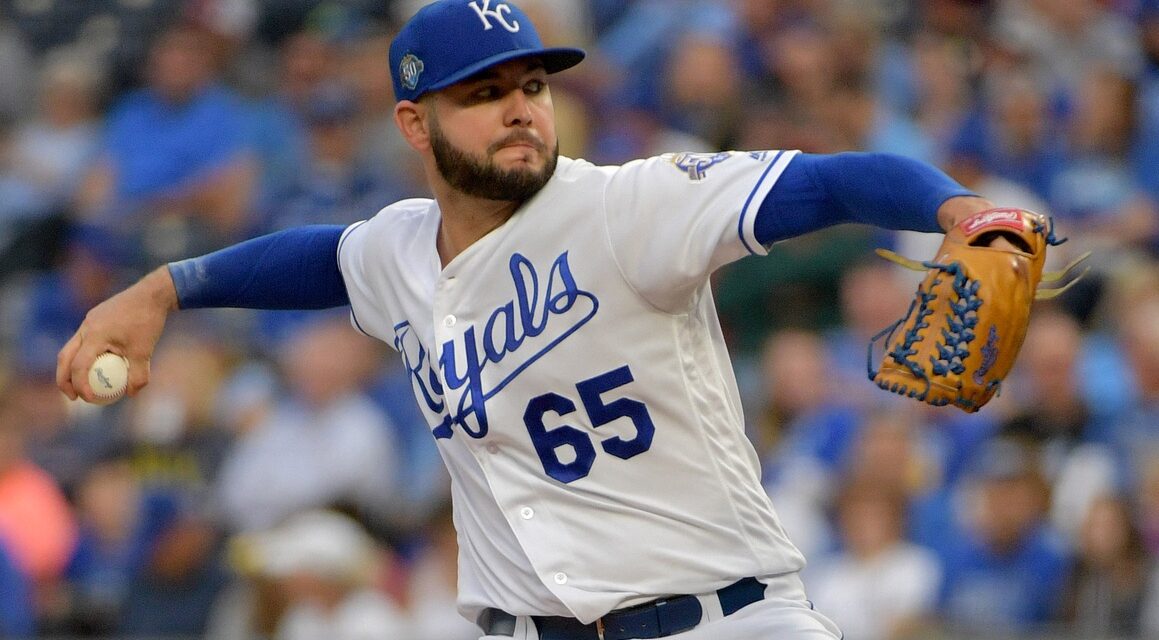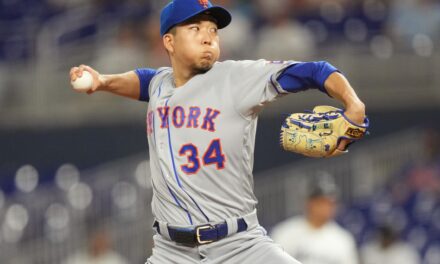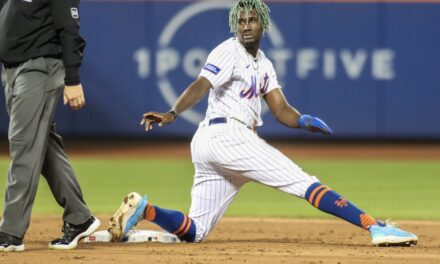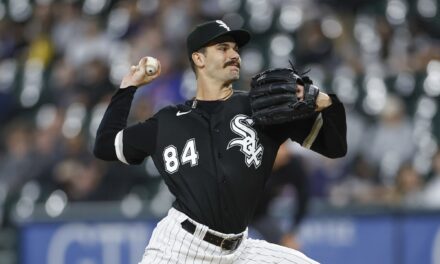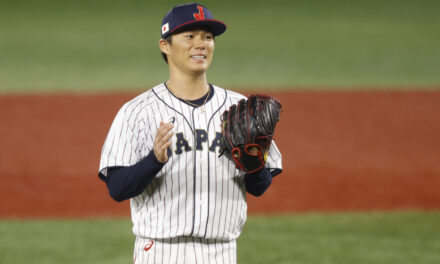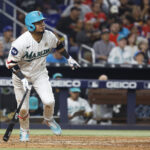
An MMO Fan Shot by Mr_O
As of today, the Mets have one of the best starting rotations in baseball, buoyed mostly by the strength of their top four starters. However, pitching depth is a major concern going into the 2019 season. Jason Vargas is currently penciled into the fifth spot in the rotation, without any inspiring names behind him on the depth chart.
After trading away Justin Dunn, and with Franklyn Kilome recovering from Tommy John surgery, the pitching depth behind Vargas is currently Corey Oswalt, Chris Flexen, and PJ Conlon. Seth Lugo and recent Rule V pickup Kyle Dowdy are possible spot starters from out of the pen, but neither should be relied on to step into the rotation on a full-time basis.
Noah Syndergaard, Zack Wheeler, and Steven Matz have all had multiple trips to the DL in the last two seasons, and without any further acquisitions, one of those Syracuse starters will be pitching every fifth day for the Mets should the inevitable occur.
Ideally, the Mets would be able to fill the fifth spot in their rotation with a reliable starter who can stay healthy, eat innings, and pitch to a respectable ERA. We have seen enough from Vargas to know that he is not that guy. As the fifth starter on the Opening Day roster in 2018, Vargas made 20 starts and pitched only 92 innings, to a 5.77 ERA. He averaged less than five innings per start.
Who is Jakob Junis?
Jakob Junis is not a household name. His results for Kansas City have been adequate for a back-of-the-rotation starter in the AL, though not spectacular. His half season in 2017 and his full season in 2018 are almost identical, which gives us a pretty good indication of the kind of pitcher he is. Junis sits 92 with his fastball (touching 96) and relies heavily on his slider, having thrown it 37% of the time in his career so far. In his first and only full season, Junis threw 177 innings at an average of six innings per start. He has been on the disabled list just one time in his entire minor and major league career.
Before making his debut in 2017, Junis was the Royals’ eighth-ranked prospect by MLB pipeline. Kansas City did not have a single Top 100 prospect that year, so his prospect status was approximate to that of a pre-debut Robert Gsellman or Seth Lugo. He is listed as the third starter of eight, in a rebuilding Royals rotation deep with young and controllable arms. Junis is under team control for four more seasons, with his first arbitration year set for 2020. Given the circumstances, it’s unlikely that a trade package would require any major league pieces, or any of Gimenez, Alonso, or Mauricio. Hypothetically, it’s possible that we could add Junis without sacrificing the ability to make other offseason moves.
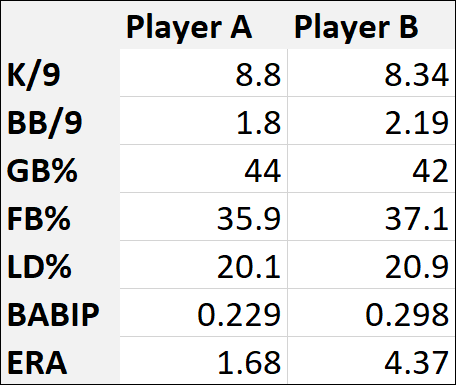
In the table above, Junis’s 2018 season is listed as Player B, and Player A is Zack Wheeler’s second-half splits of the same year. We can immediately see why Junis may have untapped potential. The righty has similar strikeout and walk numbers to Wheeler when he was at his best. He also allows the same type of contact, producing groundballs, flyballs, and line drives at nearly the same rates. Nonetheless, Junis pitched to a 4.47 ERA in 2018, and a 4.30 ERA in 2017, much higher than we would expect given the results Wheeler was able to produce.
There are two major explanations for this difference. Wheeler was helped out with some good luck (0.229 BABIP), but that doesn’t explain the entire gap. The more pronounced difference is in the power numbers against each pitcher. In 2018, Junis had a .455 SLG against, while Wheeler sported a minuscule .253 SLG against. Going even deeper than that, the average hit against Junis was worth 1.75 bases, while the average hit against Wheeler in the above time frame accounted for 1.45 bases. Why the discrepancy? Each pitcher has roughly the same contact numbers, but when hitters made contact against Junis, it was much harder than the contact made against Wheeler. In fact, the average exit velocity against Junis was more than 2 mph harder than Wheeler’s average exit velocity in 2018, according to publicly available Statcast data.
It would be easy to say that Junis makes more mistakes than Wheeler, but considering he’s typically more of a control pitcher, that doesn’t make too much sense on the surface. There are many factors that go into producing weak contact rates. Velocity, movement, location, timing, deception, and pitch sequence are all worth considering, but there is something else that can’t be overlooked.
In Flushing Infirmitas
In a Fangraphs article published in September, Jeff Sullivan explored what Tom Verducci called the ‘Mystery of Flushing.’ In it, Sullivan details a phenomenon unique to Citi Field:

Flushing, for reasons yet unknown, is murder on exit velocity. This graph shows the difference between exit velocities at home and away for each park during the 2015-2018 seasons. In almost every season, Citi Field is either at or near the bottom for home/away exit velocity differential. The other interesting takeaway from this graph? Kauffman Stadium is near the top.
Kauffman has a questionable reputation as something of a pitcher’s haven, thanks to its cavernous dimensions. The reputation isn’t supported by the results, however, as hitters have actually had slightly better offensive production at Kauffman than the average stadium. Kauffman has the same effect for hitters as Coors Field, a comparably expansive outfield to patrol, but to a lesser degree. Conversely, Fangraphs rates Citi Field as the 29th worst stadium for offense, despite its (now) reasonable dimensions. Yes, that accounts for the poor state of the Mets offensive lineup… other teams have similar trouble at Citi.
Conclusion
The concept of putting a player in a position to succeed starts long before they step foot in New York. Flyball pitchers like Bartolo Colon, Addison Reed, Tanner Roark, and even Max Scherzer have all seen much greater success at Citi in recent years than they have elsewhere, and the reasons are starting to become clear. Junis has the potential to see the same benefits. In theory, we would be taking him from a stadium that amplifies his weaknesses (higher fly ball rates) and putting him in a stadium that amplifies his strengths. Pitching at Citi would mute the disproportionate power numbers afflicting Junis’s ERA. Combined with his low walk rates and respectable strikeout numbers, Junis would have every chance to become the durable high-quality starter we need.
* * * * * * * * *
This Fan Shot was contributed by MMO community member and die-hard Mets fan Mr_O. Have something you want to say about the Mets? Send your article to [email protected] or use this Contact Form. Or ask us about becoming a regular contributor.


